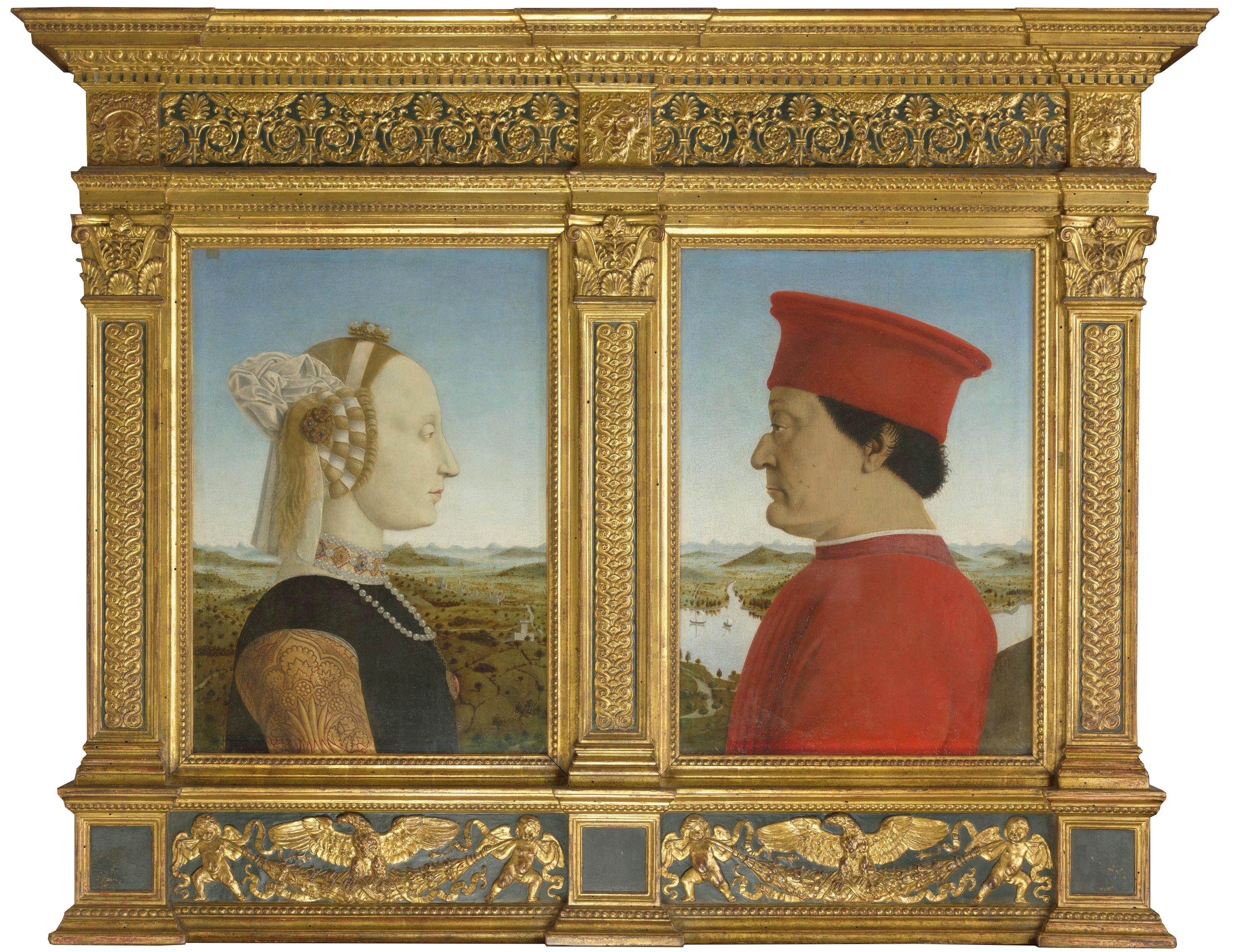The Duke and Duchess of Urbino Federico da Montefeltro and Battista Sforza
Piero della Francesca (Sansepolcro, Arezzo 1416/17 – 1492)
One of the most celebrated portraits of the Italian Renaissance, the diptych features the Duke of Urbino, Federico da Montefeltro (1422-1482) and his wife Battista Sforza (1446-1472). In the tradition of the fourteenth century, inspired by the design of ancient coins, the two figures are shown in profile, an angle that ensured a good likeness and a faithful representation of facial details without allowing their sentiments to show through: indeed, the Duke and Duchess of Urbino appear unaffected by turmoil and emotions. The couple are facing each other and the spatial element is suggested by the light and the continuity of the rolling landscape in the background, representing the area of the Marches over which the Duke and Duchess ruled. The chromatic contrast between the bronze skin tones used for Federico and the pale tones of Battista Sforza is striking; the pale pallor of the Duchess not only respects the aesthetic conventions which were fashionable during the Renaissance but could also allude to her untimely death in 1472. On the back of the panels, the Duke and Duchess are featured being carried triumphantly on ancient wagons, accompanied by the Christian virtues; the Latin inscriptions pay tribute to the couple’s moral values. The presence of the images on the reverse side suggests that the two paintings, now set in a modern frame, would once have been part of a diptych.
One of the Piero della Francesca's most famous works, the double portrait is representative of the relationship between the painter and the Duke and Duchess of Montefeltro; Piero was a frequent guest at their court, finding himself in a cultured and refined atmosphere which would soon become one of the most important cultural and artistic hearts of Italy. The master painter marries the strict approach to perspective learned during his Florentine education with the lenticular representation more characteristic of Flemish painting, achieving extraordinary results and unmatched originality.
